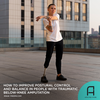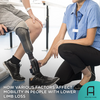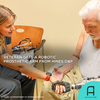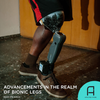Possible Prosthetic Liner Issues and Solutions
The dynamic of putting your leg within a gel casing that is expected to bear almost 2.5X your body weight with each step is bound to have its issues. Even with the introduction of sophisticated gel and complex silicone formulas, some problems still arise from the use of a prosthetic liner. And when summer heat arrives, prosthetic wearers can definitely expect more issues.

To help you prepare for every possible issue with your prosthetic liner, we created this cheat sheet:
1.) Pistoning
Pistoning refers to the detaching and reattaching motion your locking liner makes with every step. When you notice this pistoning up and down in your socket, it is most likely caused by the shrinking of your limb caused by either weight loss or lack of sock ply.
SOLUTION: You can add a sock ply to tighten the socket, reducing an wiggle room. You can also replace your current liner with a thicker one, or you can utilize a gel solution.
2.) The Falling Liner
There are times that you would notice the top edge of the liner starting to roll down your leg. This may be because the liner is either too short or too high around your thigh. Sometimes if your prosthetic liner is too tight along your thigh it will tend to roll down.
SOLUTION: No DIYs here. It’s best to contact your prosthetist.
3.) Sweating (for new wearers)
When you first start wearing a liner, you might notice that you sweat a lot around that area. Excessive sweating around the liner area is a simple case of “breaking in.” The body part to which the liner is attached is not used to being constricted. Prosthetic gel liners can also feel a little hot at first, so heavy sweating can be expected.
SOLUTION: Many amputees suggest that applying mild to moderate amounts of unscented and aluminum-based antiperspirant or using a Knit-Rite Liner Liner prosthetic sock underneath goes a long way in helping you adjust to your liner. Please note that non-alum-based products are harmful to your liner.
If you find that wearing your prosthetic liner still causes heavy sweating even after several weeks of usage, contact your prosthetist.
4.) Heavy Sweating (for those that have been using a prosthetic liner for a while)
It can be astounding to find that you still sweat heavily long after you've gone through the “breaking in” phase. Heavy sweating at this stage is probably caused by air squeezing in between the liner and the residual limb. Or, if not, there could be a hole in the liner.
SOLUTION: Make sure you tighten the prosthetic socket and call your prosthetist.
5.) Skin Irritation
Skin irritation can be caused by various reasons, such as (a.) neglecting to clean or disinfect; (b.) using harsh lotion, cream, powder, or soap; (c.) washing the limb too frequently and causing the skin to dry out; (d.) fungal or bacterial infection of both the limb and liner; and (e.) a loose liner due to a shrinking residual limb.
SOLUTIONS:
(a.) Create and follow proper cleaning, rinsing, and disinfecting habits.
(b.) Make sure that your cleaning products are do not contain irritants. You may want to look into prosthetic cleansing materials or prosthetist-approved skincare regimen. Also, discontinue using products that either has hydrocarbon oils or animal fat.
(c.) Wash the limb only once per day, and track your skin’s progress.
(d.) Contact your prosthetist as well as a dermatologist
(e.) Call your prosthetist.
6.) Skin Irritation (located on the top edge of the liner)
Skin irritation in this area can be caused by a prosthetic liner that is put on too tight or because the liner is pulled on to the limb instead of rolling it on to the limb.
SOLUTION: Make a habit of rolling your liner instead of pulling. Apply Prosthetic Salve on the irritated area. If the problem persists, call your prosthetist.
7.) Open Wounds
This can literally be caused by anything and is independent of your liner.
SOLUTION: Contact your prosthetist immediately. Never use liners that will make direct contact with irritated skin as well as open wounds. Though, if you must, make sure to cover it with a bandage.












































































